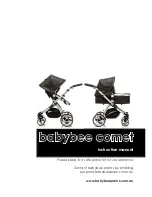
Instruction Manual
D200124X012
2500 and 2503 Controllers/Transmitters
June 2017
31
When replacing the sensor assembly, the displacer may retain process fluid or pressure. Personal injury or property
damage may occur due to sudden release of the pressure. Contact with hazardous fluid, fire, or explosion can be caused by
puncturing, heating, or repairing a displacer that is retaining process pressure or fluid. This danger may not be readily
apparent when disassembling the sensor assembly or removing the displacer. Before disassembling the sensor or removing
the displacer, observe the more specific warning provided in the sensor instruction manual.
When disconnecting any of the pneumatic connections, natural gas, if used as the supply medium, will seep from the unit
and any connected equipment into the surrounding atmosphere. Personal injury or property damage may result from fire
or explosion if natural gas is used as the supply medium and preventive measures are not taken.
Preventive measures may include, but are not limited to, one or more of the following:
D
remote venting of the unit,
D
re‐evaluating the hazardous area classification,
D
the removal of any ignition sources, and
D
ensuring adequate ventilation.
For information on remote venting of this controller refer to page 13.
Check with your process or safety engineer for any additional measures that must be taken to protect against process
media.
Troubleshooting
When troubleshooting, open loop conditions must exist unless otherwise stated. When monitoring the process
variable, use the most accurate level indicating device available. The output signal measuring device should have
corresponding accuracy.
Table 7 lists some common operating faults, their probable causes, and corrective action.
Table 7. Troubleshooting Chart for Fisher 2500 Controller/Transmitters
Fault
Possible Cause
Check
Correction
1. Process wanders or cycles
around set point.
1.1 Proportional band or specific
gravity adjustment incorrect or
improperly tuned control loop.
Ensure the prestartup procedures
are completed correctly. Tune
control loop.
If stable control cannot be attained
and all other elements are
functionally correct, examine other
possible causes related to the
controller/transmitter.
1.2 Supply pressure varying or
incorrect supply pressure setting.
Use input pressure gauge to
monitor stability. Make sure
regulator IN supply pressure is
within limits.
Apply correct supply pressure. Use
one regulator per instrument.
1.3 Sensor not plumb and is in
contact with sidewall or leak in
displacer.
Check cage vessel and stillwell
installation, or for leaking displacer.
Make sure the displacer and
displacer rod hangs freely. Make
sure linkage is tight. Replace
displacer if leaking.
1.4 Relay malfunction.
Check for relay malfunction by using
the testing relay deadband
procedure.
Depress plunger to clean out the
fixed restriction. Replace relay using
the procedure in the Maintenance
section.
-continued-









































